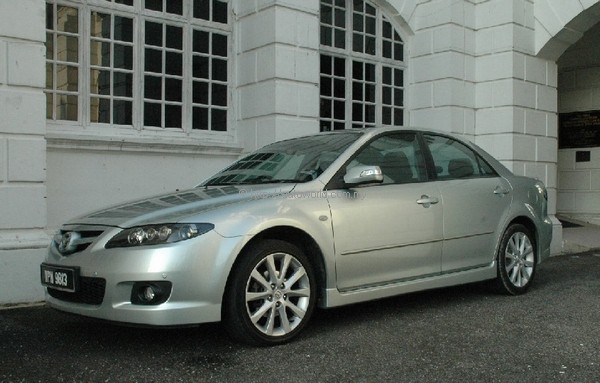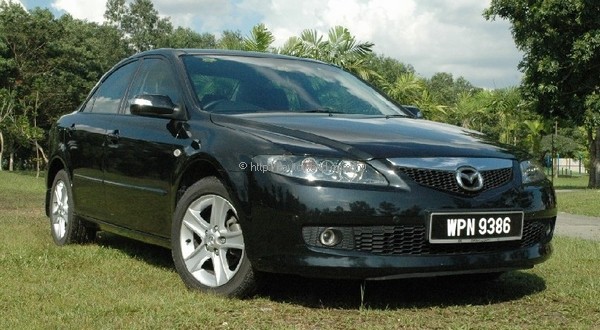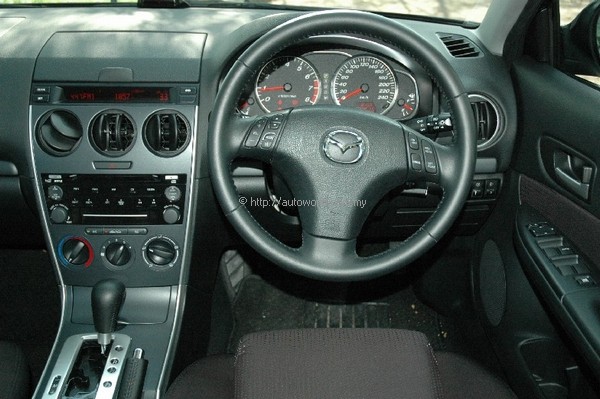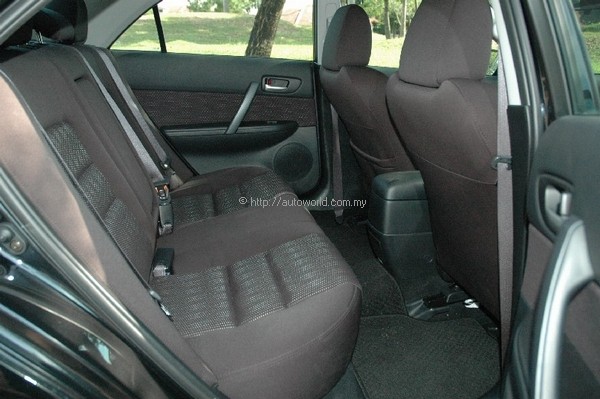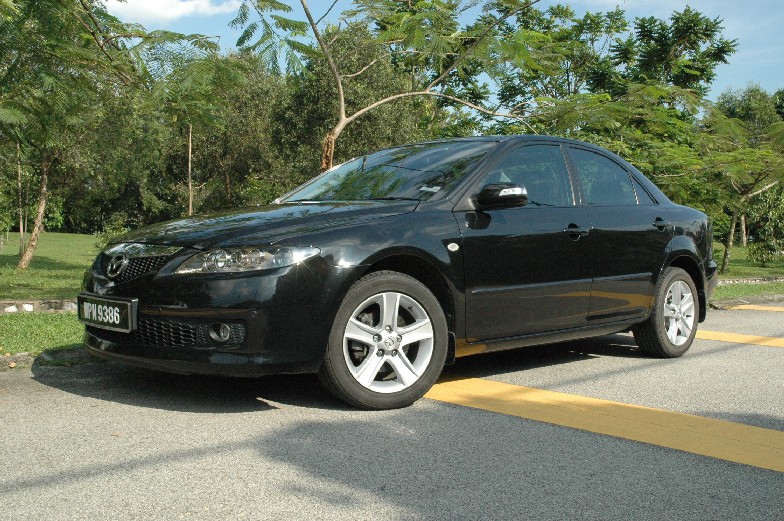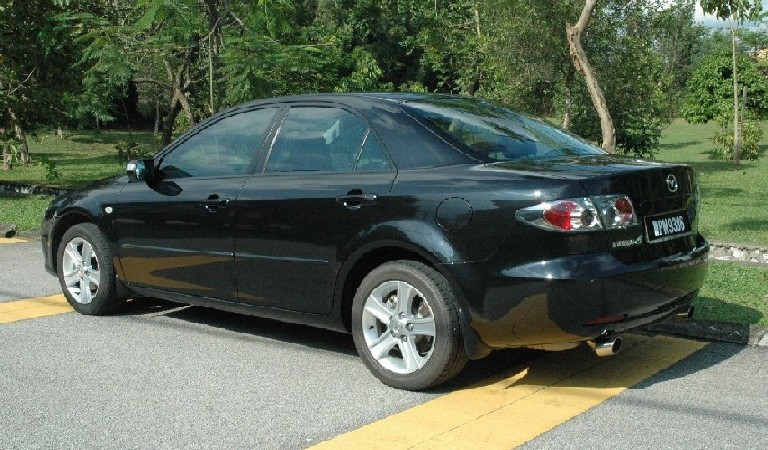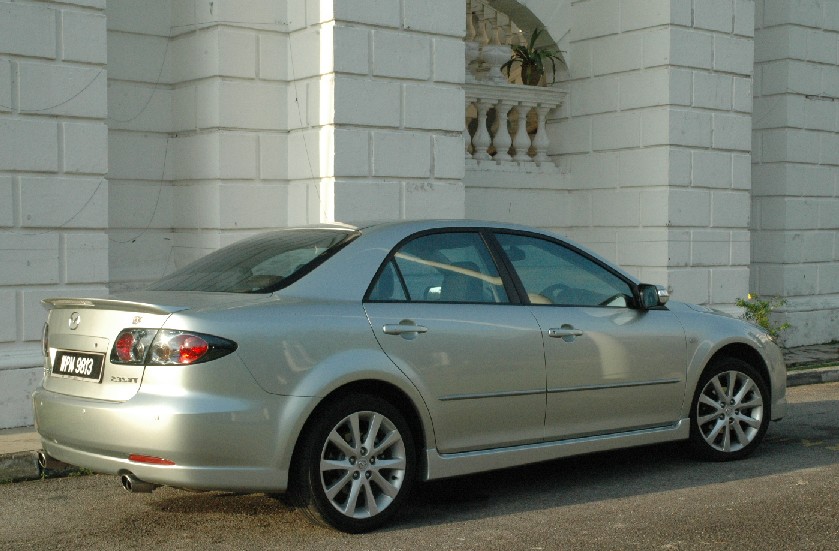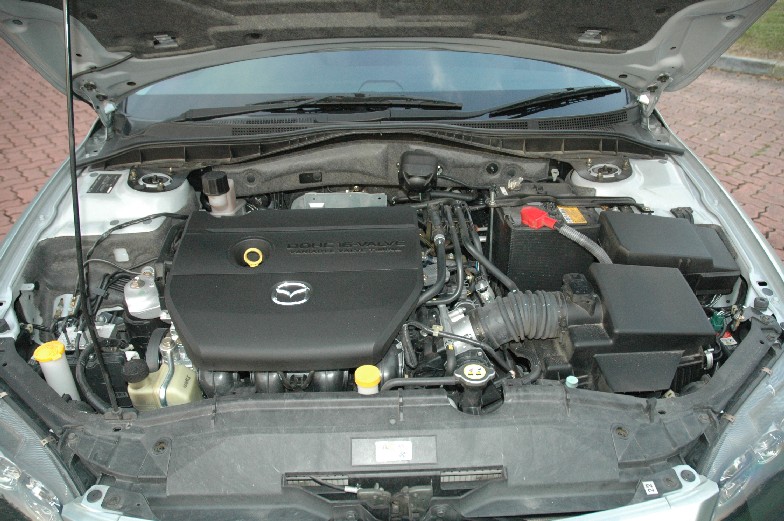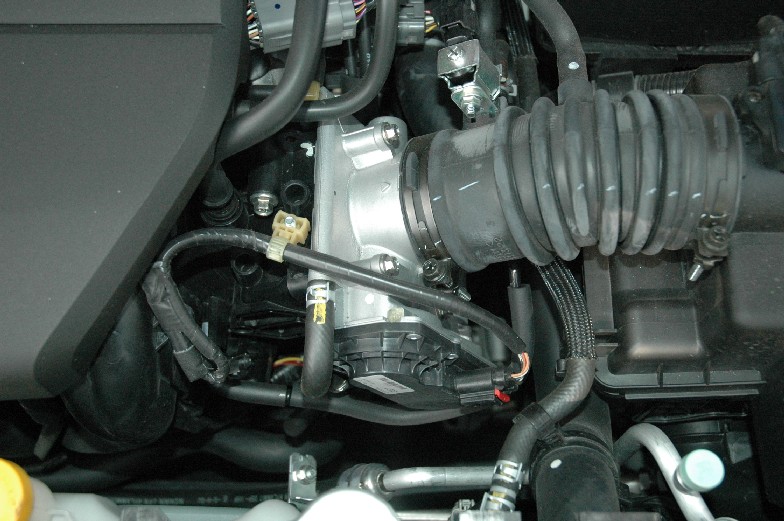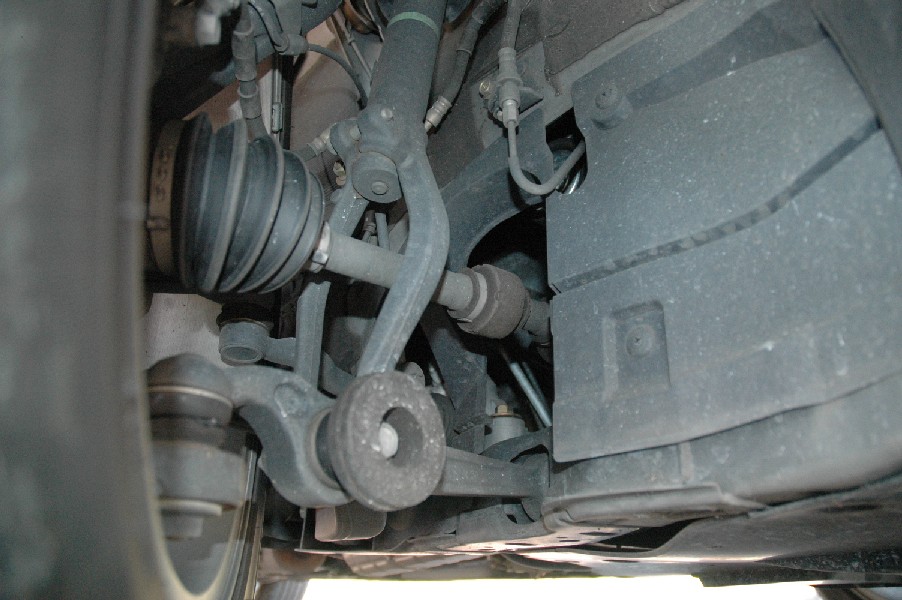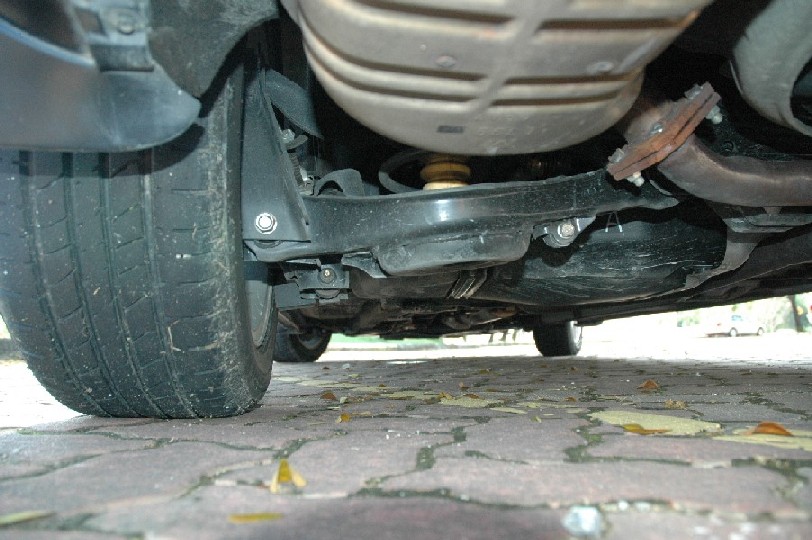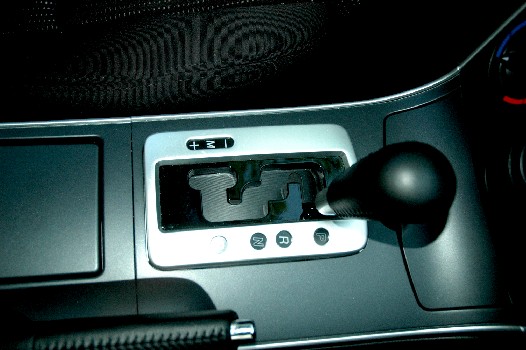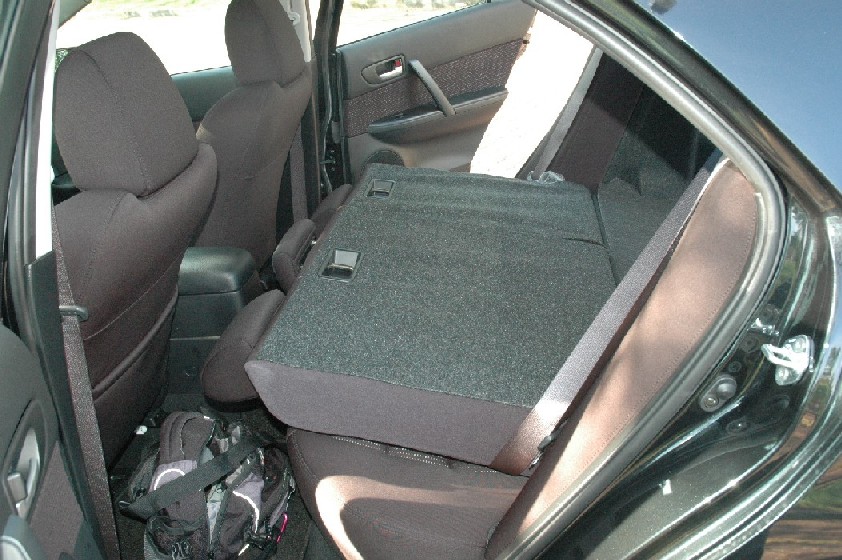Mazda 6 – Young & Trendy Family Car
I’ve always had a soft spot for Mazda, for after all, it was the RX2, (the Capella with the rotary engine,) in the mid seventies that rocketed me from an ‘also ran’ in my little Datsun, to fame. With a used car that I had purchased from a contractor in Klang Road, I entered the Series Production Race in 1976, and finished on the podium. That car served me well; in ten Grand Prix, I managed to garner five first overall titles, and finished in second place for the other five, between 1977 and 1979. The Capella was replaced by the Mazda 626, but they never made a rotary version for that.
My first 626 was a company car in the late seventies, and what impressed me about the car even at that time was how sure-footed it was. Mazda took pride in being in the forefront of technology, having overhead camshafts when most of its competitors were still running pushrod engines. The 626 had a powerful engine, and the great handling came with a comfortable ride, thanks to what was at that time, advanced technology, variable coil springs. These springs were softer at the ends, which cushioned one from the little ripples on the roads. As the spring compresses, the car sits on the harder and thicker part of the springs, and held. The result was a car that had a comfortable ride when going slow, and a harder ride when it mattered.
Now, after more than two decades, I have just tested the Mazda 6, the latest descendant of the 626, and I come away with the same satisfied feeling.
There are two versions; you can opt for the lower spec model with a 149PS, 2.0 litre DOHC engine, or the more powerful and better-packaged, 169PS, 2.3 litre model. We got both of them, courtesy of Cycle & Carriage Malaysia, and each makes an excellent value proposition, if you will let your heart rule over your head.
Size-wise, the Mazda 6 would be a mid-sized sedan. It seats four to five comfortably. It has a sporty design, made to appeal to the younger set, even catering to those with small children in the form of an ISOFIX child seat fittings in the car. My younger friends (of up to 40years of age) seem to like it, while the older set would like something more austere like the Camry or the Accord.
The interior fittings are pretty nice, with velour upholstery, and trim panels are in black, presumably to give it a sporty flavour. Lighter colours like beige or grey would make it more acceptable to the more mature market. The 2.3 litre model comes with leather. Both models are nice to ride in, and I suppose that cutting back on some of the trim would make the 2.0 litre model a little more palatable to the pocket.
Performance is quite acceptable with the 2.0 litre. It has just enough power to get you from zero to 100 km/h in 11.0 seconds, and a top speed of a shade under 200 km/h. In the course of its evolution, the Mazda 6 has taken on a front-engine-front-drive configuration versus the front-engine-rear-drive configuration of the Mazda 626, and there are slight differences in the behavior of the car; nevertheless, the Mazda 6 is still as enjoyable to drive as the original 626 that I once knew. The 5-speed automatic gearbox struggles a little when pushed, but for the average Joe, who wants to abide by all the rules of the road, it delivers enough grunt. With the 2.3 litre engine, the gearbox is more relaxed, and speed builds up relatively easily, due to the greater maximum torque of 211Nm, compared to the 187 Nm available in the 2.0 litre engine. In both versions, one has the option to go into manual mode. The great thing about the Mazda system is that when you are in ‘manual’ mode, the gears do not shift up when you reach the rev limit. This gives the driver a better sense of control over the gearbox, and if you forget to shift, the engine bounces off the rev limiter. When you slow down enough, say for a toll plaza, the gears do shift down, but only to third gear, just to ensure you don’t bog down, but input from the driver is necessary. This makes the Mazda 6 a more ‘fun-to-drive’ car.
We managed a zero to 100 km/h in 9.8 seconds, with air-conditioner on, and a top speed of 215 km/hr. We note that the speed per 1000 rpm is the same for both models, at around 43 km/h, but the power delivery from the 2.3 litre model is smoother, and appears to be the right match for the chassis.
In terms of handling, I must say that both the Mazda 6 models are exceptional. Although the ride is on the comfortable side of firm, and this gives you a very comfortable ride, it handles very well when pushed to the limit around corners. As part of the test, we took a drive up to Genting Highlands for a cup of coffee at Starbucks. We had some esteemed company with us on the drive up, in the shape of a Subaru Imprezza and a BMW. The Mazda 6 was not as fast as the other two cars, but it gave a very good account of itself, especially around the never-ending corners at the foothills and on the last five kilometres approaching the hilltop. It takes all the bumps and uneven surfaces extremely well, and even the ‘sleeping policemen’ bumps along the way were handled very well. The Mazda 6 held its line unerringly through the corners, with just a tinge of understeer, and was very easy to control. Coincidentally, it was drizzling at the time, but the Mazda 6 took it all as if it was dry.
The front suspension is a double wishbone set-up, and the rear is a multi-link arrangement, quite a potent combination. The wishbones keep the front camber constant, giving the car a very predictable type of handling. Large stabilizer bars keep the body more or less on an even keel. The 2.0 litre did not have the traction control system of the 2.3 litre, but it didn’t seem to need it at all. On the highways, the Mazda 6 is comfortable to cruise in at anything between 160 to 180 km/hr, after which you would wish you had a slightly stiffer suspension. The ordinary user would find this a good compromise between comfort and performance, because at regulation highway speeds, the Mazda 6 is very quiet and composed. For the record, wheel sizes are 16 inch on the 2.0 litre and17-inch on the 2.3 litre.
Fuel economy on the Mazda 6 is quite reasonable. We did not have the cars long enough to do a full test, but the 2.0 litre model returned 360 kilometres from the full tank, and that included the hard dash up Gentings. I estimate that driven sedately, the 2.0 litre would give you a range of around 450 to 500 kilometres. The 2.3 litre was not taken up Gentings, but was tested to Seremban and back, twice. When I returned the car, it had done 307 kilometres on the odometer, but there was still more than a third left in the tank. I estimate the range to be around 450 to 480 kilometres from a full tank.
All in all, the Mazda 6 makes a great car for the person who wants a ‘young’ shape, an engine that delivers good power, reasonable fuel economy, and can cater to some fast driving every once in a while. A sports car it is not, but a slouch it isn’t either. At the price of RM145K for the 2.0 litre model, and RM166K for the 2.3 litre model, they offer pretty good value for money, considering the fact that they are imported fully built-up from Japan. If nothing else, at least it looks different!




